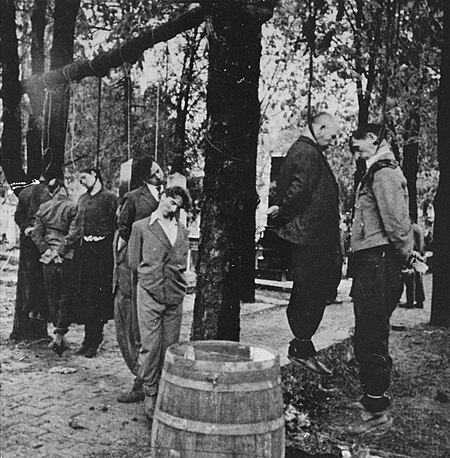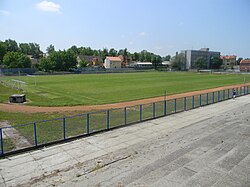Pančevo executions

The Pančevo executions (Serbo-Croatian Latin: Pokolj u Pančevu; Serbian Cyrillic: Пoкoлј у Панчеву) were the summary execution of 36 Serb civilians in Pančevo from 21 to 22 April 1941, during World War II. The executions were carried out by the German army, in particular elements of the Panzergrenadier Division Großdeutschland, with the assistance of the Waffen SS, in particular elements of the 2nd SS Panzer Division Das Reich. The executions were also supported and facilitated by local Germans, in particular members of the Kulturbund. The executions came about in response to an alleged ambush by local Serbs on elements of the German army. In reality, the ambush was a false-flag operation, orchestrated by the local Germans.
Excerpt from the Wikipedia article Pančevo executions (License: CC BY-SA 3.0, Authors, Images).Pančevo executions
Трг краља Петра I, Pančevo МЗ Центар (Панчево)
Geographical coordinates (GPS) Address Nearby Places Show on map
Geographical coordinates (GPS)
| Latitude | Longitude |
|---|---|
| N 44.870555555556 ° | E 20.640277777778 ° |
Address
Трг краља Петра I
26000 Pančevo, МЗ Центар (Панчево)
Vojvodina, Serbia
Open on Google Maps









